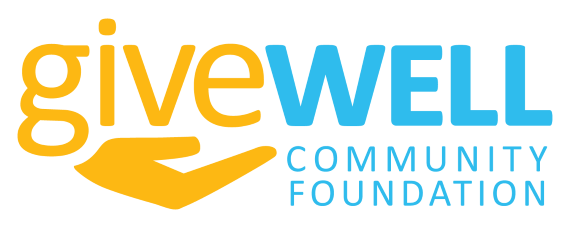Tongue twisters, privacy issues, documentation, and corporate giving
Tongue twister: OBBBA, IRAs, QCDs, and FAQs
If your head is spinning, it’s for a good reason! Let’s face it–the rules for using IRAs to give to charitable organizations were complicated before the One Big Beautiful Bill Act (OBBBA) got thrown into the mix. Let’s address five frequently asked questions we’ve been hearing from attorneys, CPAs, and financial advisors as you counsel your charitable clients.
“I have a lot of clients who are 70 ½ and older. I know that the new tax laws are a big deal. Did the rules change for Qualified Charitable Distributions?”
This is a great question, and it’s super important. The short answer is no–the OBBBA did not directly change the IRS’s rules for Qualified Charitable Distributions, or “QCDs.” Through a QCD, a taxpayer who is over the age of 70 ½ can direct up to $108,000 (2025 limit) from an IRA to an eligible nonprofit organization, including certain types of funds at GiveWell Community Foundation.
“I can tell there’s more to the story. What else should I know to best guide my clients who are 70 ½ and older?”
We are glad you asked! QCDs are even more tax-savvy after the OBBBA because they bypass the new 0.5% adjusted gross income floor that will apply to itemized charitable deductions starting in 2026. Unlike other gifts, QCDs also avoid the 35% cap on deduction value for high-income taxpayers, preserving their full tax benefit. Because they reduce taxable income directly without requiring itemization, QCDs provide retirees with a simple, consistent way to maximize charitable impact in a more restrictive tax environment.
“When should I call the Community Foundation if I have a client who is a good candidate for a QCD?”
Anytime! Several types of funds at the Community Foundation are eligible recipients of Qualified Charitable Distributions, including field-of-interest funds, designated funds, unrestricted funds, and agency funds. Although your client’s donor-advised fund is not a permissible QCD recipient under IRS rules, our professional staff is happy to work with you and your client to establish another type of fund alongside an existing donor-advised fund and set in motion an overall strategy that meets both the client’s financial and estate planning goals as well as the client’s goals for community impact.
“Remind me again why IRAs are such powerful legacy gifts to charitable organizations?”
Clearly, IRAs are tax-savvy savings vehicles during a client’s lifetime because contributions to traditional IRAs may be tax-deductible. Plus, the assets inside the account grow tax-deferred, allowing returns to compound. Leaving an IRA to charitable organizations at death, such as to a client’s fund at the Community Foundation, is also tax-savvy. The assets avoid income tax because the nonprofit organization, unlike heirs, can withdraw the funds tax-free. The assets also escape estate tax because charitable bequests are fully deductible from the taxable estate.
Please reach out to the Community Foundation anytime. We are happy to establish a charitable giving plan that allows your client to make QCDs to help achieve their charitable goals.

Going private is not so private: Advantages of a GWCF donor-advised fund
Here are three questions you can ask to determine whether a private foundation or a donor-advised fund may be best for your client’s unique situation and goals:
How important is flexibility in giving when it comes to your charitable priorities?
While private foundations and donor-advised funds each play meaningful roles in philanthropy, there are key distinctions that make donor-advised funds, especially those housed within community foundations, a more flexible and accessible option for many donors. These differences extend beyond the legal structure and deductibility rules; they also include the ease of use and the practical opportunities for impactful, customized giving.
Another important distinction to note is the “5% rule,” which requires private foundations to distribute at least 5% of the fair market value of their assets each year for charitable purposes. Donor-advised funds are not subject to this regulation, allowing more flexibility for the donor to recommend grants at their discretion.
Particularly with donor-advised funds at the Community Foundation, your clients can also choose to tap into our unique support through philanthropic advising, facilitating family engagement, and offering a community and network of resources to help inform them of the urgent needs in the community.
How important is privacy and publicity when it comes to your philanthropy?
Among the differences between donor-advised funds and private foundations, privacy preferences are important, and your clients should be acutely aware of the differences as they continue their philanthropic journeys. All private foundations are required to complete a Form 990-PF each year, which in turn, must be made publicly available. Form 990-PF includes disclosures including fiscal data of the foundation, a list of grants and amounts, names of trustees and officers, and more.
Donor-advised funds at the Community Foundation, however, are not subject to this disclosure. By establishing a named fund at the Community Foundation, donors who want to give anonymously can customize the name of their fund and determine how much contact information (if any) they would like grantees to receive for each charitable distribution.
It’s important to note that increasingly, donor-advised funds and private foundations are being used in tandem. If a private foundation needs to meet its minimum payout for the year and has not decided on grantees, or does not want its giving to be publicized, the private foundation can make the annual distribution to a donor-advised fund at the Community Foundation to satisfy IRS requirements and then make grants at a later time.
What level of administration, management, and control are you looking for when it comes to your philanthropy?
While donor-advised funds may offer more flexibility being free from mandatory distributions, your clients may have a specific investment strategy or level of agency they would like to maintain in their giving. While this may appeal to some, it’s important to note the downsides that come with the administrative upkeep needed to establish and maintain a private foundation.
To start a private foundation, there are plenty of compliance tasks and regulatory steps that need to be followed. Sunsetting private foundations to establish a donor-advised fund at the Community Foundation can help preserve a philanthropic legacy while relieving your clients of administrative burden. Terminating a private foundation and consolidating giving through a donor-advised fund is often a great alternative when day-to-day management takes away from the focus and impact of investing in the causes your client cares about.
With increases to the standard deduction and limits to charitable deductions for itemizers rolling out in 2026 under the One Big Beautiful Bill Act, it’s more important than ever to be aware of different opportunities to maximize the tax benefits for your clients. Whether a private foundation or a donor-advised fund, we encourage you to reach out to the Community Foundation so we can help evaluate what is best to meet your client’s charitable and financial goals.

Document, document, document: A cautionary tale
This is not just a theoretical concern, as the taxpayer in Besaw v. Commissioner can attest. In this recent Tax Court case, the taxpayer claimed $6,760 in noncash charitable deductions for 2019, accompanied by Form 8283 and receipts from nonprofit organizations. Although receipts were dated and signed, they failed to specify the donated items or their values. Subsequent attempts by the taxpayer to retroactively reconstruct item descriptions and values were rejected by the court. Consequently, the court disallowed the entire deduction—even though it acknowledged that the donations themselves indeed occurred.
So what’s important about this case? A few things:
“I meant well” won’t cut it.
The ruling underscores that intent alone does not satisfy IRS requirements. Even with proper forms and reasonable documentation, omissions—such as blank receipt fields for item description or value—are fatal. Additionally, post‑filing supplementation of documentation (“reconstructed” evidence) is not acceptable in lieu of contemporaneous recordkeeping.
Document it like you calculate it!
As one advisor put it, “Good intentions aren’t enough—you need good documentation.” For those who advise charitable clients, the takeaway is clear: you must treat documentation with the same rigor as tax calculations. Ensure that, at the moment of donation, nonprofits provide receipts that include a reasonably detailed description of each item (what it is, quantity, condition); the fair market value of each item; “no goods or services provided” language where applicable; and a fully-completed Form 8283 that is filed on time with any required appraisals.
Consider centralization to help avoid missteps.
For many of your charitable clients, GiveWell Community Foundation can serve as a helpful “hub” for all charitable giving. Your client can use a variety of vehicles to support multiple causes and nonprofits through a single, trusted partner. Because the Community Foundation can accept cash, stock, and other property, we can effectively “consolidate” contributions and provide streamlined record-keeping, often resulting in just one or a few receipts for tax reporting. This simplifies compliance, reduces paperwork, and gives your clients (and you!) the confidence that their philanthropic intentions are both efficiently managed and properly documented–especially when tax time rolls around.
Please reach out anytime and let us know how we can help.

Floor to ceiling: Four factors that will influence corporate giving now and later
At GiveWell Community Foundation, we work with business leaders and business owners to structure charitable giving plans that achieve the company’s goals for its employees and the community. In many cases, corporate giving strategies include donating to local nonprofit organizations, whether directly or through a corporate fund at the Community Foundation.
If you run a business, you may have caught wind of the changes to the charitable deduction rules that apply to corporations. These tips are for you! Here’s what you need to know:
A new “floor” on the deductibility of charitable donations is coming in 2026.
Starting in 2026, corporations can only deduct charitable contributions that exceed 1% of their taxable income. Donations below that threshold won’t be deductible at all. This means, for example, that a company with $100 million in taxable income must give more than $1 million to take a charitable deduction–and even then, only donations above that $1 million are eligible for a charitable deduction. Many worry that this change in the law will negatively impact corporate giving, which reached an all-time high last year.
The “ceiling” stays in place–and it’s trickier.
The IRS’s ceiling on charitable deductions—allowing corporations to deduct up to 10% of taxable income—still applies. Starting in 2026, both the new 1% floor and the existing 10% ceiling will apply simultaneously, which makes things more complex. That means only amounts exceeding the 1% floor and up to the 10% ceiling are deductible. Both categories of “disallowed” giving can be carried forward for up to five years. In a carryforward year, the donation can only be deducted if the total giving in that year exceeds the 1% floor, and the carried-forward portion, together with current-year giving, doesn’t exceed the 10% cap for that year. See? Tricky!
So what now? Here are two important takeaways:
Don’t wait to address this issue.
Act quickly to review your company’s giving strategies for the remainder of 2025 and look ahead to future years. In particular, please reach out to the Community Foundation to explore how you can use a corporate donor-advised fund to maximize your deductions for 2025 before the floor kicks in.
Consider sponsorship opportunities.
Keep in mind that your company can still deduct charitable sponsorships as marketing expenses if the payment provides a direct business benefit, such as advertising, rather than being considered a pure charitable donation. Under IRS rules, your business will need to substantiate the benefit received. Note also that the nonprofit organizations you support will need to properly account for this support on their end of the transaction, including determining whether to report it as “unrelated taxable income.”
Whenever in doubt, reach out to the team at the Community Foundation. We are happy to help!

The professional staff at GiveWell Community Foundation is a resource and sounding board as you serve your philanthropic clients. We understand the charitable side of the equation and are happy to serve as a secondary and trusted source as you manage the primary relationship with your clients. This newsletter is provided for informational purposes only. It is not intended as legal, accounting, or financial planning advice.
Ready to get started?
You know your clients. We know philanthropy. Together we can ensure your clients make the best decisions for making a difference in the community.

Lori Martini
Vice President/CPO
863-683-3131
lmartini@givecf.org
